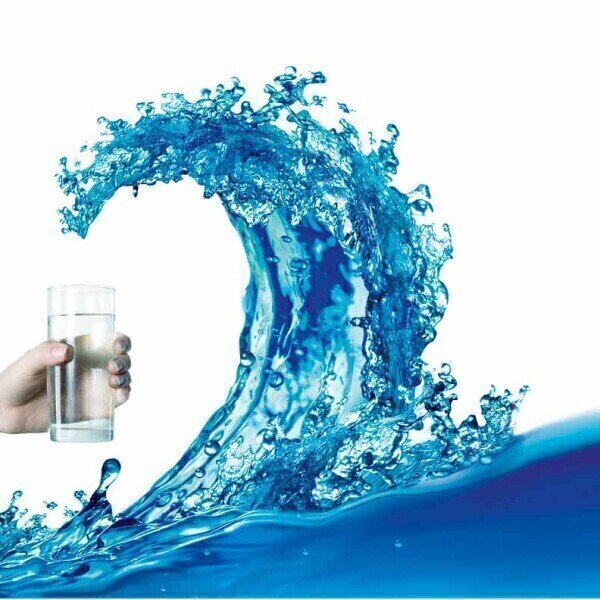Water is Food! On World Food Day, ensure safe drinking water, meet regulations with ultra-sensitive water analysis
Water is Food! On World Food Day, ensure safe drinking water, meet ... Labmate Online


Contaminated Water and the Importance of Sustainable Development Goals (SDGs)

Contaminated water poses a threat to both human health and the environment. In order to address this issue, national and international regulatory agencies have established official testing methods for drinking water and wastewater. These agencies include the U.S. Environmental Protection Agency (USEPA), World Health Organisation (WHO), EU, and other regulators.
Rapid Test Methods and Sustainable Development Goals
To provide more convenient and reliable methods for users, rapid test methods following recognised standards such as ISO, USEPA, and others have been developed. These methods have received certification of ISO accordance or equivalency to EPA methods, ensuring that they deliver comparable results and can be used to comply with national regulations. The use of these methods also offers additional advantages, such as the reduction of chemical and sample volumes, leading to a decrease in waste production and improved user safety.
The Importance of Clean and Safe Drinking Water
Clean and safe drinking water is essential for everyone on our planet. Ensuring that drinking water sources comply with applicable regulations, including the Safe Drinking Water Act, is vital for protecting human health.
Safe Drinking Water Act & Clean Water Act – What is it?
The Safe Drinking Water Act is the primary regulation for drinking water. It covers finished drinking water from the plant and distribution lines. Compliance with this act requires proper documentation and reporting to demonstrate adequate quality control and product suitability.
When it comes to the analysis of drinking water and beverages, high sensitivity tests are typically required. The use of a spectrophotometer provides accurate and fast results. Spectrophotometry can be applied to various applications, including the measurement of specific chemical levels and process monitoring for drinking water and beverages.
Ensuring Reliable Drinking Water Test Results with the Spectroquant® Prove Spectrophotometer
For those conducting spectrophotometric testing methods to analyze drinking water for contaminants, it is crucial to guarantee compliance with USEPA and other national regulations. Our company offers test kits for various parameters, such as ammonium, chlorine, COD, nitrate, nitrite, phosphate, sulphate, and more. These test kits have been confirmed to be equivalent to USEPA methods and provide comparable results. On our website, users can easily filter for the analyte suitability and choose the parameters that fit their specific needs.
To learn more about performing photometric analyses of drinking water parameters in sensitive ranges, we provide articles and webinars that are available online:
- Article: Nitrate in Mineral and Drinking Water
- Article: Measuring Chemical Oxygen Demand in Water Treatment Facilities
- Article: An Easier, Faster, and Cost-Effective Option for Measuring Total Nitrogen
- Article: Phosphate in Groundwater and Surface Water: A Rapid and Reliable Determination Method Using the Photometric Spectroquant® Test
- Webinar: Drinking Water Analysis
- Webinar: Analytical Quality Assurance for Accurate Water Testing
- Webinar: Drinking Water Monitoring
WHO Drinking Water Limits and Methods
The World Health Organisation (WHO) recognizes access to safe drinking water as a basic human right and an essential element of health protection policies. The WHO has published guidelines that establish maximum allowable levels for many parameters, and detailed information on individual parameters can be found in the subchapters of the guidelines. The WHO also provides clear guidelines for analysis methods.
USEPA Drinking Water Limits and Methods
The Safe Drinking Water Act (SDWA) empowers the USEPA to set enforceable standards for contaminants in drinking water to protect public health. Most approved analysis methods come from the USEPA, American Public Health Association (APHA), or American Society for Testing and Materials (ASTM). Our company has received USEPA equivalency certificates for various parameters, including ammonium, chlorine, COD, and ortho- and total phosphate. We continue to work closely with consultants to certify more equivalent methods for a range of testing parameters.
For wastewater analysis, we also have several equivalent methods to those in the Clean Water Act, including ammonium, chlorine, chromium (VI), COD, cyanide, nitrate, nitrite, ortho- and total phosphate, and sulfate. For more detailed information and approvals/equivalency documents, please visit our website.
EU Drinking Water Directive
The EU Drinking Water Directive (2020/2184 of Dec 16th, 2020) establishes a legal framework to protect human health from drinking water contamination. It provides clear regulations for all member states. Similar to WHO guidelines and USEPA regulations, the directive imposes limits on various water parameters to ensure human health protection. In its most recent update, the directive included an important change regarding analytical quality assurance, defining the performance characteristics required for a measurement. Any method that fulfills the requirements for Limit of Quantification (LOQ) and Uncertainty (k=2) can be used.
SDGs, Targets, and Indicators in the Article
1. Which SDGs are addressed or connected to the issues highlighted in the article?
- SDG 6: Clean Water and Sanitation
- SDG 3: Good Health and Well-being
The article discusses the importance of clean and safe drinking water, which is directly related to SDG 6. It also mentions the threat that contaminated water poses to human health, connecting it to SDG 3.
2. What specific targets under those SDGs can be identified based on the article’s content?
- SDG 6.1: By 2030, achieve universal and equitable access to safe and affordable drinking water for all.
- SDG 6.3: By 2030, improve water quality by reducing pollution, eliminating dumping and minimizing release of hazardous chemicals and materials, halving the proportion of untreated wastewater, and increasing recycling and safe reuse globally.
- SDG 3.9: By 2030, substantially reduce the number of deaths and illnesses from hazardous chemicals and air, water, and soil pollution and contamination.
The article emphasizes the need for safe drinking water and the importance of testing methods to ensure compliance with regulations. This aligns with the targets mentioned above.
3. Are there any indicators mentioned or implied in the article that can be used to measure progress towards the identified targets?
- Indicator 6.1.1: Proportion of population using safely managed drinking water services.
- Indicator 6.3.2: Proportion of bodies of water with good ambient water quality.
- Indicator 3.9.2: Mortality rate attributed to unsafe water, unsafe sanitation, and lack of hygiene (per 100,000 population).
The article doesn’t explicitly mention these indicators, but the focus on ensuring safe drinking water and improving water quality aligns with the need to measure progress using these indicators.
SDGs, Targets, and Indicators Table
| SDGs | Targets | Indicators |
|---|---|---|
| SDG 6: Clean Water and Sanitation | 6.1: By 2030, achieve universal and equitable access to safe and affordable drinking water for all. | 6.1.1: Proportion of population using safely managed drinking water services. |
| SDG 3: Good Health and Well-being | 6.3: By 2030, improve water quality by reducing pollution, eliminating dumping and minimizing release of hazardous chemicals and materials, halving the proportion of untreated wastewater, and increasing recycling and safe reuse globally. | 6.3.2: Proportion of bodies of water with good ambient water quality. |
| 3.9: By 2030, substantially reduce the number of deaths and illnesses from hazardous chemicals and air, water, and soil pollution and contamination. | 3.9.2: Mortality rate attributed to unsafe water, unsafe sanitation, and lack of hygiene (per 100,000 population). |
Behold! This splendid article springs forth from the wellspring of knowledge, shaped by a wondrous proprietary AI technology that delved into a vast ocean of data, illuminating the path towards the Sustainable Development Goals. Remember that all rights are reserved by SDG Investors LLC, empowering us to champion progress together.
Source: labmate-online.com

Join us, as fellow seekers of change, on a transformative journey at https://sdgtalks.ai/welcome, where you can become a member and actively contribute to shaping a brighter future.







